Low Water May Halt Hoover Dam’s Power
What happens if Lake Mead drops too low to generate electricity at Hoover Dam?
By Brett Walton
Circle of Blue
The shutdown of one of the largest electrical power plants in the Southwest will begin with air bubbles on a turbine inside the Hoover Dam. The bubbles form when low water levels in Lake Mead, the reservoir behind the dam, create pressure differentials in the water flowing into the generators. As they move from areas of low pressure to high, the bubbles collapse and explode, scouring the turbine blades. The generating unit will then start to buck and vibrate, the blades will become pocked and pitted, and the whole thing will eventually need to be shuttered, eliminating the power source that supplies 29 million people in the Southwest with a portion of their electricity.
For the last eight weeks, Choke Point: U.S. has explored vivid examples of the collision between rising energy demand and diminishing reserves of fresh water. What clearly appears to be an unavoidable day of reckoning at Hoover Dam is, arguably, the most striking example in the country of the confrontation between the two resources.
A prolonged dry spell, lasting over a decade, is steadily draining the water sources that power Hoover Dam’s giant turbines and has left Lake Mead at only 41 percent full. The lake has dropped 130 feet since 1999 and is now at 1,084 feet, depths not seen since 1956. The Bureau of Reclamation projects it will shrink another two feet by next month, reaching its lowest elevation since the reservoir was filled in the 1930s.
Power generation has declined in tandem. The falling water levels have prompted federal managers to reduce the Hoover Dam’s hydroelectric generating capacity by 23 percent. If drought conditions continue in the Colorado River Basin; if climate change brings the hydrologic strictures predicted; and if water allocations to the basin states aren’t reduced in line with anticipated lower flows, what was once (and for some, still is) unthinkable might happen. There won’t be enough water to power the dam’s generators, thus shutting down the plant and creating energy uncertainty for millions of people in the region.
It is an outcome that would destabilize energy markets in the Southwest, send retail customers that serve millions of residents to the spot market to buy power at up to five times the cost and dissolve the illusion that rivers are infinitely malleable to our own purposes.
Rough Zones
A dam’s electrical output is partly a function of the height of its reservoir. More water equals more pressure, which equals more energy. The total capacity at Hoover is now 1,617 megawatts—a 20 percent decrease from its designed capacity of 2,080 megawatts. Every foot of elevation loss reduces the power potential by 5.7 megawatts.
Experts don’t know what will happen if the water drops below 1,050 feet, which represents the bottom of the efficiency curve for the current turbines, where more water is needed to produce an equivalent amount of electricity. Such low depths increase the rough zones for the turbines—the generating range in which vibration and cavitation threaten to damage the unit. At extremely low lake levels, like the ones Mead is fast approaching, those rough zones—which usually occur in a narrow production band at medium capacity—could expand to fill the entire generating range, making the turbines vulnerable at any speed. But this unprecedented scenario would be a mystery even to the staff of the Bureau of Reclamation, which operates the dam.
“Honestly, we’ve never been that low, so we don’t know what it will look like,” said Hoover Facility Manager Pete DiDonato. “A lot depends on what the rough zones look like as the lake drops. We’re getting into uncharted territory.”
Hindsight
There is much uncertainty in predicting Mead’s ebb and rise, but scientists are fairly sure that the future will look nothing like the past.
The Colorado River begins its 1,400 mile course as snowmelt in the Rocky Mountains of Colorado and Wyoming. In 1922, when the river’s flow was divided among its seven basin states, the Colorado was flush. Basing their judgments on a short historical record and a few gauges, the negotiators believed the mean annual flow was at least 17 million acre-feet at Lees Ferry, Ariz. Thus they granted 7.5 MAF each to the upper and lower basins, thinking they had left a reasonable buffer. Mexico, at the river’s mouth, was cut out of the original deal, but in 1944 was allocated 1.5 MAF.
These calculations were made at a time of historic plenty. Several climate studies based on tree ring data show the early 20th century to be the wettest period of the last 500 years. River allocations are two million to three million acre-feet greater than the river’s long-term average flow. Studies indicate that the conditions are likely to get drier in the decades ahead.
“The models show a consensus for drying in the Southwest and a reduction in the mean annual runoff,” said Dennis Lettenmaier, a professor of civil and environmental engineering at the University of Washington, who studies river flow projections. “There’s a fair amount of uncertainty in the models, but none shows an increase in runoff for the Colorado.”
The current drought is a convenient reference point. Since 2000, annual flows have averaged 12 MAF. In the midst of the drought came a warning shock from the coast. In 2008, two researchers at the Scripps Institute of Oceanography, UC San Diego—Tim Barnett, a marine physicist, and David Pierce, a climate scientist – released a study predicting that by 2017 Lake Mead has a 50 percent chance of dropping too low for power generation and a 50 percent chance of going dry by 2021.
The Bureau of Reclamation’s studies show a 20 percent chance of Mead going below 1,050 feet by 2025, odds well within the conceivable.
Accounting for the effects of climate change is the confounding factor. Warmer temperatures will increase evapotranspiration at the same time precipitation is predicted to decrease. If worst-case scenarios come true, the state of river flows now may run close to the new normal.
Operations
The Bureau of Reclamation recognizes the threat. The dam’s operators, like car owners putting air in the tires and getting an oil change, are trying to make Hoover as efficient as possible to squeeze every bit of power out of its designed capacity.
The Bureau has ordered a low-head turbine for one of the 17 generating units at the facility. The new turbine will be installed in March 2012. If it performs as expected, three more low-head turbines will be added starting in 2014.
New stainless steel wicket gates, which control the flow of water into the turbines, were installed in the last few years, and the control system was upgraded to digital. These improvements do not increase the overall capacity, DiDonato said, but they have helped recover 88 megawatts of lost capacity.
Constraints
The easiest way to revive power generation at Hoover would be to keep more water in Lake Mead. However, the law of the river makes this difficult. Electricity is an auxiliary concern as far as operations go. The dam was built for flood control and irrigation; hydropower was a way to pay for it. Even through the drought, Hoover has had to release 9 MAF every year to meet obligations to downstream states and Mexico.
Nearly 90 percent of the annual flow of the Colorado River comes from the upper basin above Lake Powell on the Arizona-Utah border. Because tributary inflows between Powell and Mead are negligible, Mead’s volume depends almost entirely on the annual operations at its sister reservoir.
Releases at Powell are based on the so-called 24-month study, which projects lake levels two years out. Results from the August and April studies are used to schedule how much water is released the following year. In August, a baseline is set, and in April adjustments can be made if water levels rose or fell in the interim beyond what was anticipated.
Because of this, Lake Mead could drop even during a wet year in the upper basin if water levels in Lake Powell remain below the elevations that would trigger a surplus release, said Paul Miller, an engineer at the Bureau of Reclamation.
This year, for example, Powell released 8.23 MAF because reservoir elevations were too low for equalization—a category of higher releases that would cause Mead to rise. In years in which 8.23 MAF is released from Powell, Lake Mead will decline by 1.2 MAF because of evaporation and its delivery obligations to the lower basin. This equates to 12 feet of elevation loss in Mead, according to Miller.
The 24-month study in August 2010 projects a January 2011 elevation below 3643 feet (the trigger point for equalization), so Lake Powell is again scheduled to release 8.23 MAF. But the projections also show Powell’s elevation will be above 3643 feet in October next year. If this is confirmed by the time the 24-month study next April, an adjustment would be made to the 2011 operations to release 11.6 MAF from Powell.
However, the 24-Month study from August 2009 made the same prediction that equalization would be triggered in April 2010, but elevations ended up being lower than projected, and surplus flows were not released.
Some river watchers are concerned the same thing could happen next year. La Nina conditions, which characterize with drier than normal weather, have appeared again in the Pacific Ocean and are expected to persist at least through next February, possibly longer. If the elevation for equalization releases at Powell is not met, Mead will most likely drop below 1,075 feet, which is close to the redline elevation for power generation.
Shortage
In 2007, realizing that their water bank account was being overdrawn, water managers from the seven basin states worked out a shortage sharing agreement that details an emergency water release plan, should Lake Mead fall below 1,075 feet, the point at which shortage is declared. Under the deal, water managers would gradually cut back water releases in three separate stages. If this happened, it would be the first shortage ever declared on the Colorado.
In this scenario, Arizona will absorb nearly all of the pain. Under the deal that allowed the state to build the Central Arizona Project to bring Colorado River water to Phoenix and Tucson, Arizona agreed to junior rights on the river. If a shortage is declared, 96 percent of the water rationing burden falls on Arizona.
Barnett from the Scripps Institute thinks the reductions are too small.
“The cuts that they have proposed are not big enough,” he told the New York Times. “They’re not big enough to cover the climatic effects.”
The Electric Bugaboo
Not all electricity is the same and not all power plants have the same function. Gas-fired and coal-fired plants provide a constant, reliable stream of power, and are used for base loads. Hydroelectricity, on the other hand, can start and stop according to strains on the electrical grid, and is a key cog in meeting peak demand.
Dam operators at Hoover schedule water releases to take place during peak energy hours so that cheap hydropower is available when alternative power sources are the most expensive. Hoover and Glen Canyon Dam on Lake Powell handle nearly 80 percent of the peak power regulation in five western states and parts of two others, DiDonato said.
Hoover’s ability to regulate energy flows is so fine that it provides minute-to-minute balancing on the grid, said Gary Ackerman, executive director of the Western Power Trading Forum, a trade group representing commercial power interests.
“Hoover goes nowhere without taking down a significant piece of the economic and electric portfolio in California,” Ackerman added in an email.
Electricity from Hoover is distributed according to federal legislation. The Hoover Power Allocation Act of 1984 cut the pie as follows: 28.5 percent to the Metropolitan Water District of Southern California, 23 percent to Nevada, 18 percent to Arizona, and the remainder to cities such as Los Angeles and power companies in those three states.
The current legislation will expire in 2017. A bill to extend the contracts by 50 years and set aside five percent of power production for a new pool of customers, including Native American tribes, has passed the U.S. House of Representatives and is awaiting a floor vote from the Senate.
Hoover’s customers are the ones most worried by Lake Mead’s descent to 1,050 feet.
“If Lake Mead were to drop to that level, it would be devastating,” said Joseph Mulholland, executive director of the Arizona Power Authority, which markets power from Hoover.
His counterpart George Caan, executive director of the Colorado River Commission of Nevada, also said that “there is concern.”
The contracting agencies are guaranteed a share of Hoover’s output, but that share has fallen in the last decade. Total generation in 1999 was 5.5 billion kilowatt-hours. In 2009, production was only 3.7 billion kilowatt-hours. When there is a hydroelectric shortfall, the balance must be acquired on the spot market, where prices are up to five times higher than Hoover’s cheap power, which averaged 1.6 cents per kilowatt-hour wholesale in fiscal year 2009.
Right now, energy markets are generally depressed because of the recession, and prices are only double what Hoover provides, Caan said.
But if Hoover were to buckle in a stronger economy, the surge of customers into the open market would create unprecedented demand.
“It’s hard to say what the market would look like,” said Jon Lambeck, power resources manager for Metropolitan Water District. “Hoover is quite a supply of energy. If you take that away, there will be much larger demand.”
Metropolitan gets half its energy from Hoover to deliver water to 19 million customers in southern California. Most of that energy is needed to pump Colorado River water from Lake Havasu and distribute it throughout Metropolitan’s service area. Because energy costs are a significant share of water costs, loss of power from Hoover would mean an increase in water prices for many southern Californians.
But big contractors like Metropolitan with medium exposure in their power mix can spread energy costs over a larger customer base. Small contractors like the Lincoln County Power District in Nevada will have a much more difficult transition.
Lincoln County, due north of Las Vegas, is rural, remote and agrarian, home to no more than 4,500 people. The power district gets nearly 100 percent of its power from Hoover.
“We are very much concerned about this,” said Mick Lloyd, the power district’s general manager. “Lincoln County is depressed as is. It’s one of the poorest counties in Nevada. Decreased power supplies hurting our agricultural production would have serious consequences.”
Lloyd is constantly looking at other sources of power to keep operations running smoothly – he is even considering fossil fuel-based sources that clean hydroelectric power was supposed to displace.
Mulholland from the Arizona Power Authority is also looking in that direction. APA is studying the possibility of acquiring alternative power supplies—coal-fired and gas-fired generation that would supplement power from Hoover and act as a hedge against future declines.
It’s an odd post-modern twist that Mulholland’s alternative supplies are the standard supplies that alternative fuels were supposed to eliminate. But these are the consequences of historical myopia and unsustainable water use, and this is what might happen when that liquid certainty evaporates in the desert air.
Read a May 2016 feature on Hoover Dam by Brett Walton here.

Brett writes about agriculture, energy, infrastructure, and the politics and economics of water in the United States. He also writes the Federal Water Tap, Circle of Blue’s weekly digest of U.S. government water news. He is the winner of two Society of Environmental Journalists reporting awards, one of the top honors in American environmental journalism: first place for explanatory reporting for a series on septic system pollution in the United States(2016) and third place for beat reporting in a small market (2014). He received the Sierra Club’s Distinguished Service Award in 2018. Brett lives in Seattle, where he hikes the mountains and bakes pies. Contact Brett Walton

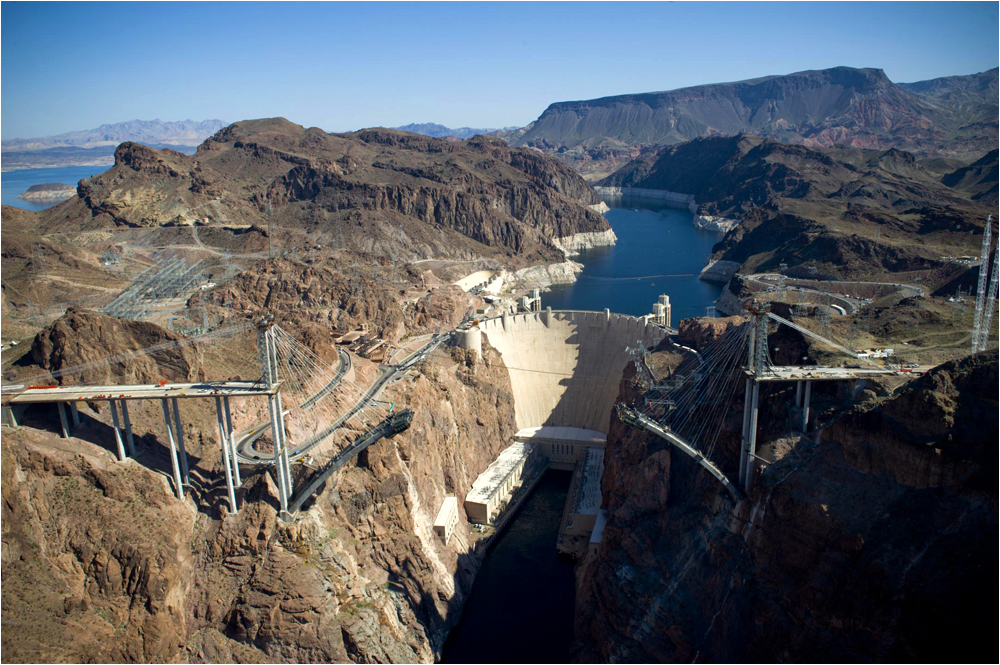
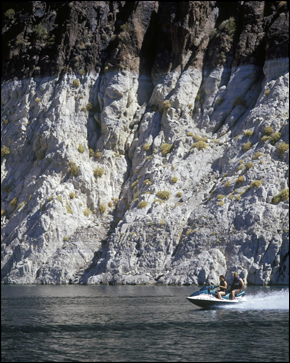
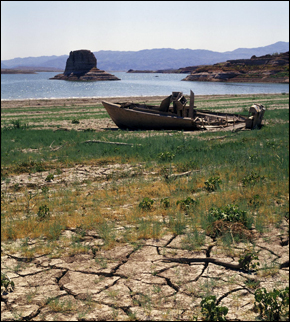

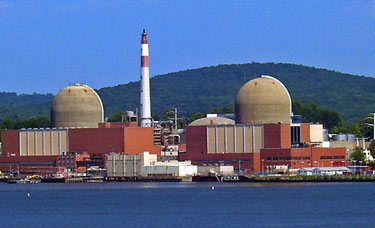
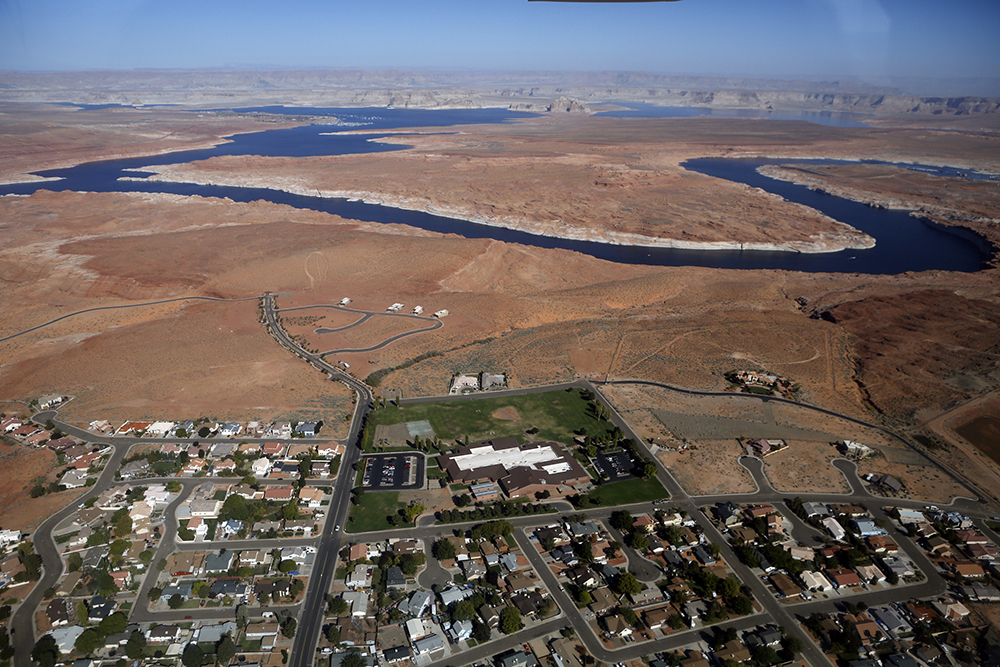




Dam operators at Hoover schedule water releases to take place during peak energy hours so that cheap hydropower is available when alternative power sources are the most expensive – what about pumping water back when alternative power sources are the cheapest?
It never should have been allowed to let the water levels falling down this far.
My God, I want to know who out there besides the idiots in big oil and coal are suggesting that there is no climate change. First these thugs in suits pump billions of tons of toxic sludge into the air and water and then they deny any wrong doing asking the government to pick up the tab as these slim balls rake in billions. God did not create planet earth to have big oil and coal companies come down here and destroy it. This is insanity. Pure freaking greed. I hope these slim balls like it hot because my guess is that is where they are headed.
Are you really serious? Study history a little and you’ll find that fluctuations in weather of been going on for millions of years. Every wonder what happened to glaciers 10 million years ago? Oh it was the cave man and his camp fires I forgot. The article even states that when they did the original studies it was the wettest period on record in the last 500 years. Here’s a thought, if your such an environmentalist… Don’t build houses in the desert and then demand such cheap energy so you can run your air conditioner all day and water your grass every night. Its people like you who are running the environment.
Yes, Jeff, climate (not weather; that’s short term) fluctuations have been going on for millions of years. Billions of years, in fact. But we humans have only been on this planet for a few hundred thousands of years, so we have yet to experience any of the really big ones. The one we’re creating ourselves right now will be our first.
The sad thing is that people like you, who refuse to accept the reality of global warming, won’t be around when the full brunt of it hits. Maybe that’s why you don’t care, huh?